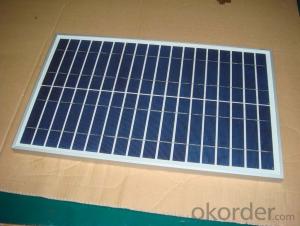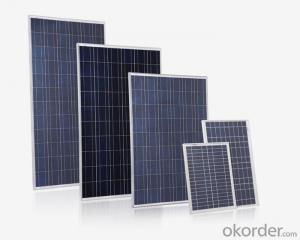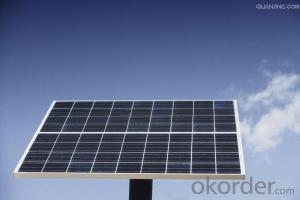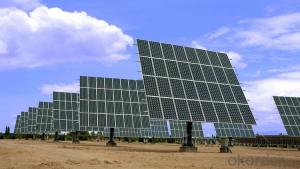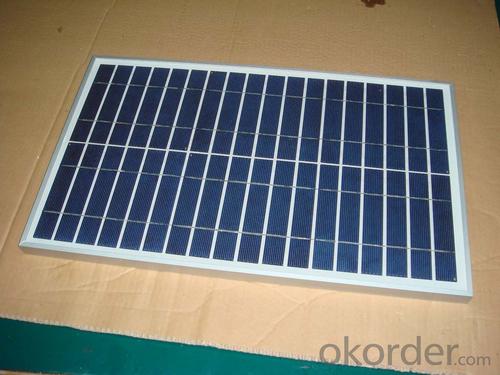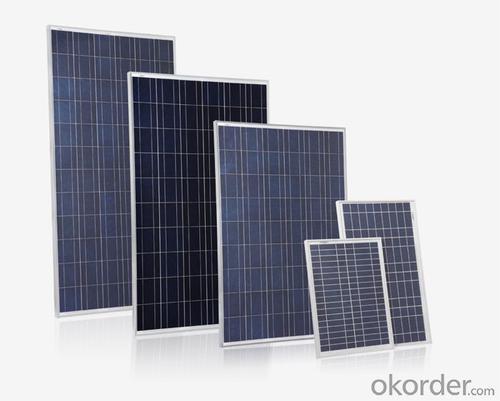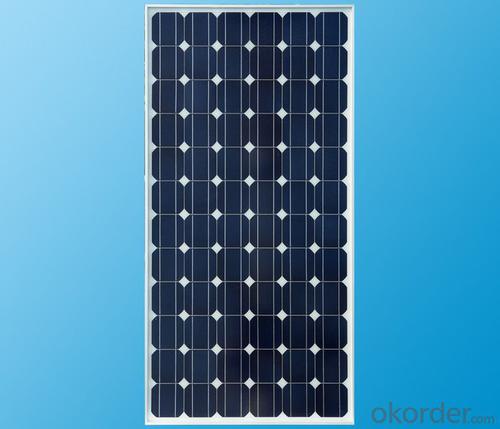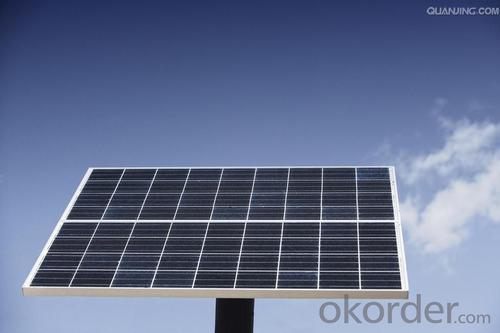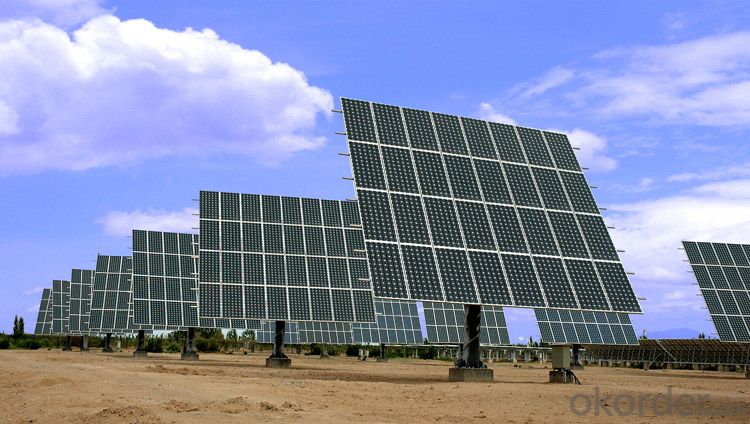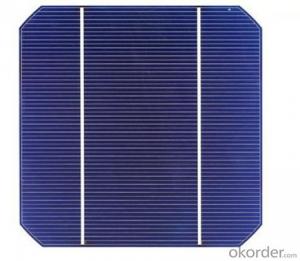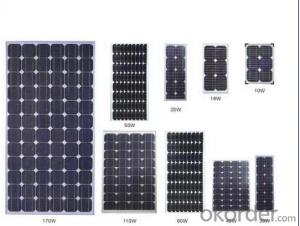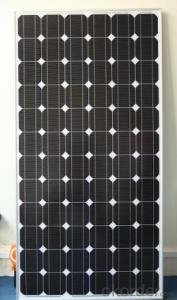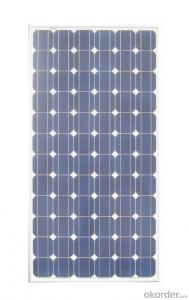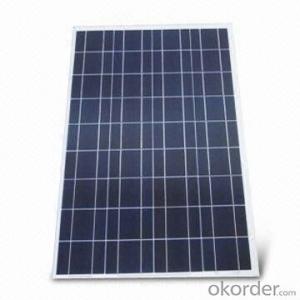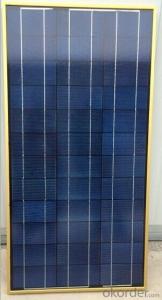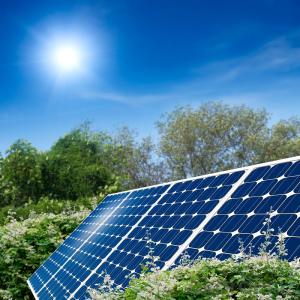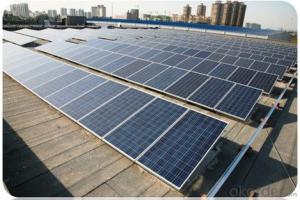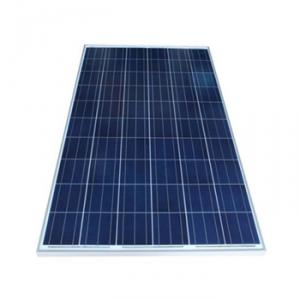3x6 Solar Cells Favorites Compare 140W 150W 260W Polycrystalline Solar Panel - Polycrystalline Silicon Solar Panel for Building Automation System
- Loading Port:
- China Main Port
- Payment Terms:
- TT OR LC
- Min Order Qty:
- -
- Supply Capability:
- 10000000000000 watt/month
OKorder Service Pledge
OKorder Financial Service
You Might Also Like
Quick Details
| Place of Origin: | Guangdong China (Mainland) | Brand Name: | CAP | Model Number: | 50w100w150w200w250w300w |
| Material: | Monocrystalline Silicon | Size: | 1385*1035*75mm | Number of Cells: | 72pcs |
| Max. Power: | 300w | type: | solar panel | color: | blue&black |
| warranty: | 5 years |
Packaging & Delivery
| Packaging Detail: | standard export package for solar panel |
| Delivery Detail: | 7-15 days for solar panel |
Specifications
solar panel
High Efficiency
25 years Warranty
High-transmissivity low-iron tempered glass
Solar Panel
50w100w150w200w250w300w
Characteristics
1,High and stable conversion efficienly based on over 4 years professional experience
2 ,High reliability with guaranteed +/-10% output power tolerance
3,Proven materials,tempered front glass,and a sturdy anodized aluminum frame allow modules to operate reliably in multiple mountily configurations
4,Combination of high efficicncy and attractive appearance
Quality and Safety
1,25 year 80%,10 year 90% power warranty 3 year power warranty
2,ISO9001:2000 (Quality Management system) certified factory
3,Product Quality warranty & products Liability Insurance to guarantee and user' benefits
4,Certifications TUV Intercert, CE Temperature Coefficients
| Module Type | 100w | 150w | 200w | 250w | 300w |
| Maximum Power at ST(Pmax)W | 100wp | 150wp | 200wp | 250wp | 300wp |
| Maximum Power Voltage(Vmp)V | 36/18 | 36/18 | 36/18 | 30.8v | 36/18 |
| Maximum Power Current(Imp)A | 2.77/5.55 | 4.16/8.33 | 5.55/11.1 | 8.11A | 8.33/16.66 |
| Open Circuit Voltage(Voc)V | 39.5/19.05 | 39.3/19.4 | 39.6/19.5 | 36.2V | 39.6/19.8 |
| Short Circuit Current(Isc)A | 3.04/6.09 | 4.58/9.16 | 6.1/12.2 | 8.7A | 9.16/18.33 |
| Cell Efficiency(%) | 18.60% | 18.10% | 18.60% | 17.80% | 18.10% |
| Module Efficiency(%) | 17.70% | 17.20% | 17.70% | 17.10% | 17.20% |
| Operating Temperature°C | -40°C to +85°C | -40°C to +85°C | -40°C to +85°C | -40°C to +85°C | -40°C to +85°C |
| Maximum system voltage | 1000V(IEC)DC | 1000V(IEC)DC | 1000V(IEC)DC | 1000V(IEC)DC | 1000V(IEC)DC |
| Power tolerance | -0.03 | -0.03 | -0.03 | -0.03 | -0.03 |
| Temperature coefficients of Pmax | -0.45%/°C | -0.45%/°C | -0.45%/°C | -0.45%/°C | -0.45%/°C |
| Temperature coefficients of Voc | -0.27%/°C | -0.27%/°C | -0.27%/°C | -0.27%/°C | -0.27%/°C |
| Temperature coefficients of Isc | 0.05%/°C | 0.05%/°C | 0.05%/°C | 0.05%/°C | 0.05%/°C |
| Weight(kg) | 8 | 11 | 14 | 20 | 25.5 |
| Number of cell(pcs) | 4*9 | 4*9 | 6*10 | 6*12 | 6*12 |
| Dimensions(mm) | 1194*534*35/30 | 1580*808*50/35 | 1471*670*40/35 | 1640*992*50 | 2000*1050*50 |
- Q: What are the tin bands, sinks and interconnections used on solar modules, and what are the solar cells used in the solar cells?
- At present, the general crystal silicon cells using p-type silicon, in the phosphorus diffusion process, the two sides of the silicon and the edge will be phosphorus doping.
- Q: What is the role of power optimizers in solar cell systems?
- The role of power optimizers in solar cell systems is to maximize energy production by individually optimizing the output of each solar panel. They ensure that each panel operates at its maximum efficiency, regardless of shading or mismatch in the system. This results in higher overall energy yields, improved system performance, and enhanced safety by reducing the risk of fire hazards or other issues caused by reduced voltage.
- Q: Are solar cells affected by pollution?
- Solar cells can be affected by pollution, particularly air pollution, as it can reduce the amount of sunlight that reaches the cells. This can result in a decrease in their efficiency and overall energy production. However, regular cleaning and maintenance can help mitigate the impact of pollution on solar cell performance.
- Q: Can solar cells be used in electric fences?
- Yes, solar cells can be used in electric fences. Solar cells are capable of converting sunlight into electricity, which can be used to power electric fences. This provides a cost-effective and environmentally-friendly alternative to traditional power sources for electric fences.
- Q: Can solar cells be used to power parking meters?
- Yes, solar cells can be used to power parking meters. They can efficiently convert sunlight into electricity, providing a sustainable and reliable source of power for parking meters without the need for continuous grid connection or batteries.
- Q: What is the role of solar cells in powering emergency response systems?
- The role of solar cells in powering emergency response systems is to provide a reliable and sustainable source of energy during crisis situations. Solar cells convert sunlight into electricity, which can be used to power critical equipment such as communication devices, lighting, and medical equipment. This ensures that emergency response systems can function effectively even in areas with limited or no access to traditional power sources, enhancing their overall efficiency and responsiveness during emergencies.
- Q: What are the different sizes of solar cells?
- Solar cells come in various sizes, ranging from small ones typically used in calculators and devices, to larger ones used in residential and commercial applications. The sizes of solar cells can vary depending on the specific purpose and power output required.
- Q: Can solar cells be used in aviation or aerospace applications?
- Yes, solar cells can be used in aviation or aerospace applications. They are commonly used in satellites and space probes to generate electrical power from sunlight. Additionally, solar cells can be integrated into the wings or fuselage of aircraft to provide a sustainable source of energy, reducing reliance on fossil fuels and extending flight time.
- Q: Is it complicated to make a solar cell work well?
- A solar cell is a physical and chemical phenomenon.
- Q: What is the lifespan of a solar cell battery?
- The lifespan of a solar cell battery can vary depending on various factors such as the quality of the battery, usage patterns, and maintenance. On average, a well-maintained solar cell battery can last anywhere between 5 to 20 years.
Send your message to us
3x6 Solar Cells Favorites Compare 140W 150W 260W Polycrystalline Solar Panel - Polycrystalline Silicon Solar Panel for Building Automation System
- Loading Port:
- China Main Port
- Payment Terms:
- TT OR LC
- Min Order Qty:
- -
- Supply Capability:
- 10000000000000 watt/month
OKorder Service Pledge
OKorder Financial Service
Similar products
Hot products
Hot Searches
Related keywords

